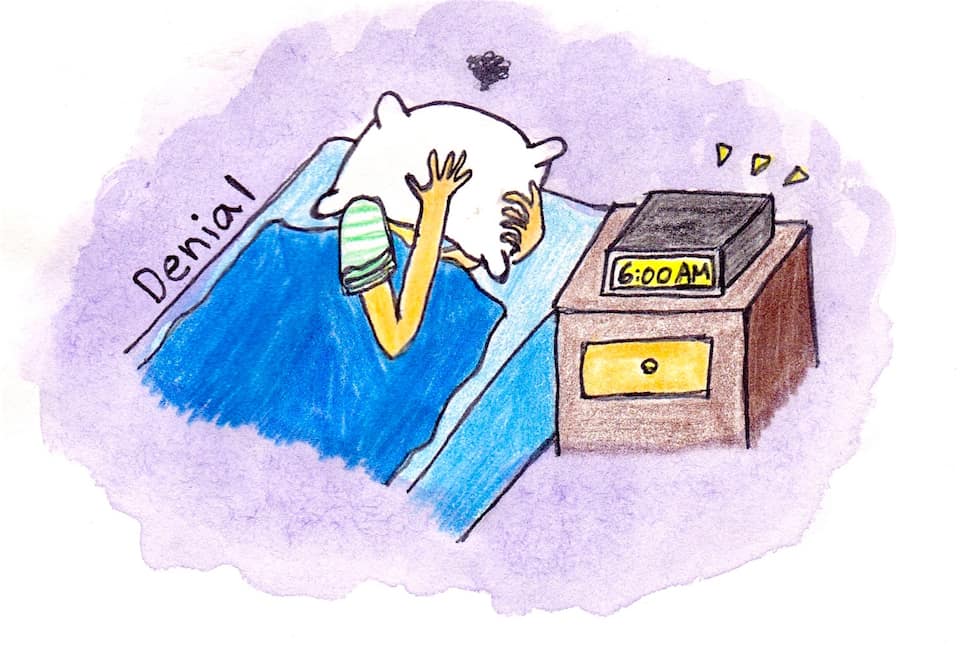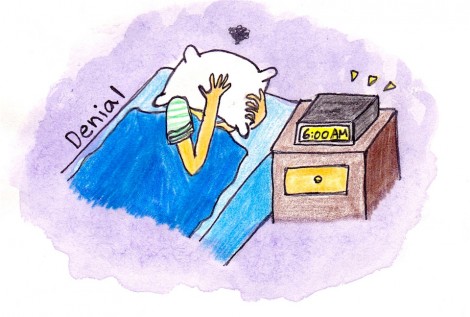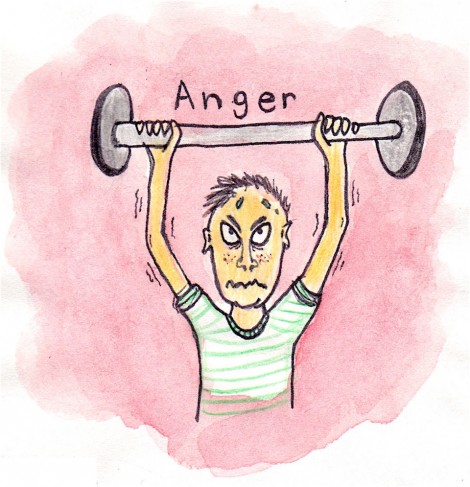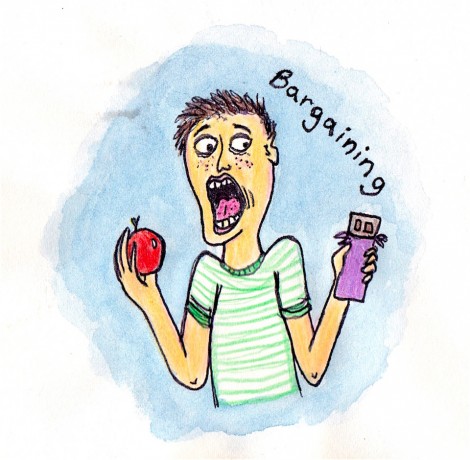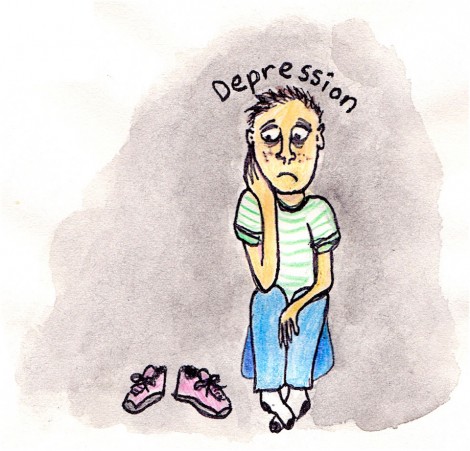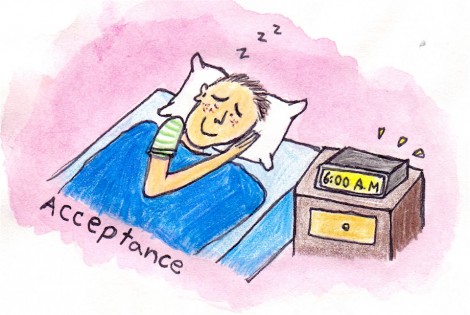I didn’t realize how much I loved running until I broke my foot.
I’ve been running casually here and there for exercise since I was a teenager, but an intense increase in my running routine last summer called for a shift in identity from ‘occasional jogger’ to ‘athlete.’
Unfortunately, my awareness of my new runner status, along with all the advice, coaching, and budgeting that comes with it, was realized too late. A poor choice in footwear and an overly ambitious schedule put an end to my short-lived career as an athlete; just one month into my new intensive routine, my foot started hurting. The pain increased slowly but consistently throughout the course of the summer, until I was finally forced to see a doctor.
After two months of consistent foot pain, I was diagnosed with a stress fracture — the smallest, yet most inconvenient of all sports injuries; dreaded by runners everywhere and generally considered one of the most frustrating injuries out there. Before I could come to terms with what my occasional jogging was doing to my body, I would have to go through five stages of grief. The following is a warning to all about the hazards of uneducated athleticism; learn from my mistakes.
1. Denial
The denial began halfway through the summer when my right foot started hurting, and I chose to do nothing about it. It was only when the semester started, and I realized the symptoms weren’t going to go away by themselves, that I disgruntledly made an appointment with the David L. MacIntosh Sports Medicine Clinic for athletic injuries.
Stress fractures are very difficult to detect via x-ray, and my scan brought up nothing. As stress fractures are mainly caused by the repetitive application of force, the sudden increase in my running routine and lack of support due to improper footwear were considered evidence enough of my true diagnosis. The doctor’s treatment course involved quitting running entirely for up to two months and walking less than 15 minutes a day.
For a person like me, who lives their entire life on their feet, this was no small order. The walk from my classes at the Victoria College campus alone are more than 15 minutes away from my classes at the physics building. In my mind, the doctor clearly didn’t understand how busy and active my life was, so I chose to ignore his advice and continued carrying on as I had. This, as I’m sure you can imagine, turned out to be a mistake.
2. Anger
It was a couple of weeks into my diagnosis, after changing nothing about my activity level except substituting long runs for long walks and my symptoms still refused to improve. If anything, they were getting worse: the rest of my body compensated for the pain in my metatarsals (bones in the ball of the foot), as the pain spread to my ankle and then up to my knee.
By now, I was getting irritated and started making an effort to exchange some of my walking commutes for biking ones. There is only so much laundry and groceries that can be hauled around atop a bicycle though, and the increased stress of adjusting my life so drastically was only making me miss my long anxiety-relieving jogs even more.
It was only after an incident where I attempted to carry coffee with me on my bicycle by stuffing a falsely labelled ‘spill-proof’ thermos in my backpack with my laptop, when I snapped entirely. A tiny split in my foot bones, too small even to show up on an x-ray, had now taken away my laptop, my ability to run errands independently and, two months of my running routine. With the pain in my foot ever increasing, it was time to start pleading with the authorities.
3. Bargaining
While I was previously determined not to let a silly injury take anything away from my already tight student budget, I now had no choice to give in and see what money could buy me. I purchased a pair of proper (and expensive) supportive running shoes in a vain and useless attempt to rescue my capacity to move.
I also gave in and booked an appointment with the pedorthist at the MacIntosh clinic, per the recommendation of my doctor. Surely the combination of expensive footwear and fancy orthotics would heal my foot and preserve my ability to continue to live a mobile and independent life.
Alas, none of these things could save me. I began scrolling the web for another way, but all I found were links to forums where people discussed their stress fracture lasting for weeks or even months past the predicted recovery date.
For me, that was it. The perseverance that had helped me push through so many miles of jogging over the summer had now abandoned me entirely. I clearly wasn’t going to change my ways without a limiting factor to force me. I explained my failure to adjust my lifestyle to the MacIntosh doctors, and begged for an air cast and crutches, which I received. I was almost ready to accept my fate, but I had to weather one more stage first.
4. Depression
The cast and crutches, as much as they were intended to restrict my movement and force me to submit to my new lifestyle as a couch potato, almost put me back to square one. Now that my foot was off the ground permanently, I took great advantage of my new found freedom of mobility to crutch-walk wherever I pleased.
At one point I even attempted to go for a leisurely stroll (or in this case, a leisurely hobble) through Trinity-Bellwoods Park with my headphones, as I used to do uninhibited so many months ago. Needless to say, this was not what I was supposed to be doing at all. The extra weight of my left foot was pushing me to move forward, and after just a few weeks of being in the boot, my left foot started hurting as well.
This pain spread up my leg to my knee, just as it had done before when I was originally injured. By the time the dim but chronic pain started creeping into my hands, I realized that I had opted for the wrong solution yet again; I was going to have to make serious lifestyle changes or I would never heal.
Finally, in mid-November, I bought a TTC pass. I also downloaded Uber onto my phone, and applied for a bursary to compensation cab rides, so that I could take a taxi to get in between classes on campus where the TTC couldn’t reach.
Using the TTC on crutches is easier said than done. There was one occasion after an exhausting work day and a 15 minute wait for a crowded streetcar where no one would get up to give me a seat, when and the streetcar hurtling forward caused me to lose balance, and I accidentally stomped my crutch into an old lady’s foot.
This was too much for me; my foot wasn’t healing and I was spending all my money on transportation and buying meals away from home, due to my inability to purchase groceries. By now, exam stress was setting in, and I was having difficulty leaving the house entirely. Where I had originally been told my foot would heal in six weeks, it had now been three months. It was time to accept the fact that some serious lifestyle changes would be in order, or I was never going to heal.
5. Acceptance
No one ever said that a full lifestyle turnaround was going to be easy. For me, it started with accepting that I wasn’t going to run again for a long time. Once I realized that my previous coping mechanisms weren’t going to return to me any time soon, it was time to find new ones. This is where everything started to come together, albeit.
After exams were over, I took the streetcar on my crutches to the Eaton Centre to buy a swimsuit and signed up for a yoga pass. For a person who has always deeply identified as being active, having had no exercise for an entire semester had caught up with me, and it was time to turn it around.
I put my identity as a runner at the back of my mind and started viewing myself as a calmer, more reflective person. I began lane swimming at the AC pool, and took up yoga lessons for the first time. Instead of vapidly staring into space, I learned how to use my commuting time on the TTC to finish readings or even just relax and listen to music.
My lifestyle changes were quickly reflected in my attitude. I caught myself high-fiving other people in casts as I crossed them hobbling up and down the stairs to the subway. I smiled at the old people who were slowly but steadily making their way across hectic Toronto with their canes. Instead of pushing myself to go for longer and further runs I learned how to breathe and reflect when life was overwhelming.
Most importantly I learned how to ask for help. My father started carrying my laundry to and from the laundromat for me and brought me groceries on busy nights of studying. My friends, upon request, were surprisingly quick and happy to participate in quieter dinners and brunches instead of nights out dancing and at busy bars.
Although my foot has not yet fully healed, I no longer spend all my time waiting for change to occur. I have accepted that it will not happen by itself, but I also can’t force it to.

